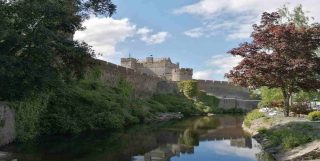
The story of Cahir predates the castle. The native Irish had built stone fortifications here long before the first Norman knights made landfall in Wexford in 1169. One of the first references to a fort in Cahir comes from a manuscript written by the Mac Firbisigh family in the 14th century, which recounts ancient oral tales. The Great Book of Lecan describes the stone fort as belonging to a woman called Badamair in the 3rd century AD; she is still known as the first woman of Cahir to this day. She was the mistress of an Irish chieftain, Finn Mac Radamair. The book describes how an enemy of the chieftain attacked the fort killing Badamair, in an act of vengeance against her lover. The fort was called `Rath Badhamhrach` and it was said to have been destroyed during the assault.
The Normans were responsible for introducing stone castles to Ireland. Cahir Castle dates from the early 13th century when the Worcester family began the task of fortifying the island in order to solidify their control of the region and the river traffic that flowed past its walls. Positioned on a rocky island the castle would have been an awe-inspiring sight.
In 1375, the castle and its lands were granted to James Butler, 3rd Earl of Ormond by Edward III, King of England. This influential family would hold sway over the castle and the surrounding area for almost 600 years.
One of the most interesting events of the castle’s history occurred in 1599, during the reign of Elizabeth I. In May of that year Robert Devereux, 2nd Earl of Essex and a favourite of the Queen, brought her army and two heavy artillery guns to batter the castle’s defences, the first use of such weapons against this mighty fortification. After just three days of heavy bombardment, the castle was captured. Visitors to Cahir can still see reminders from this momentous occasion, as there are two culverin balls embedded in the castle walls. The first of these can be seen in the North East tower overlooking the main entrance, while the second shot can be found wedged high up in the east wall of the keep, overlooking the middle courtyard. A superb large scaled model of the siege is the centrepiece of an exhibition about the event.
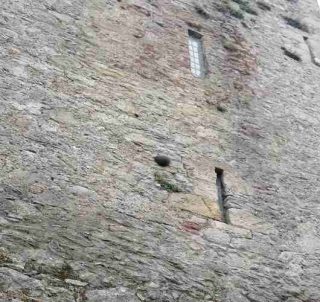
Unfortunately, for Robert Devereux, his victory at Cahir was one of the few successes of his campaign in Ireland and on his return to England with little to show for his costly efforts, he would fall from the Queen’s favour and feel the axeman’s blade just two years later.
Just 50 years later another famous character from history would also make his mark on the story of Cahir Castle. In 1650, Oliver Cromwell, along with part of his New Model Army, was cutting a bloody and brutal trail through the country when they arrived outside of the castle’s walls and prepared for war. Only this time, it was not his cannons that forced the defenders to eventually surrender, but his words. He wrote a direct letter to the Butler family that said:
“Sir, having brought my army and my cannon near this place, according to my usual manner in summoning places, I thought fit to offer you terms honourable to soldiers, that you march away with your baggage, arms and colours free from injury and violence. But if I be, not withstanding, necessitated to bend my cannon upon you, you must expect the extremity usual in such cases. To avoid blood, this is offered to you by your servant, Oliver Cromwell”
These words may very well have spared Cahir the same fate as other fortified defences that were decimated by Cromwell’s armies during this period. In 1652, the castle’s Banqueting Hall was the location of a meeting where the articles of agreement were signed between the local Confederate leaders and the Cromwellian commanders.
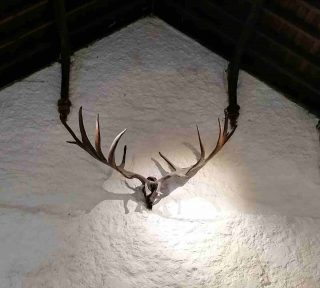
Another infamous event had occurred in the Banqueting Hall in 1627 when the then Lord Cahir’s son in law, Lord Dunboyne and a Butler relation James Prendergast were attending a function at the castle. The two men were in dispute over the inheritance of land and both became embroiled in an altercation that led to the death of Prendergast. Lord Dunboyne was subsequently arrested for murder and incarcerated in Dublin Castle, but a jury of his peers acquitted him of the crime.
Today, visitors can self-guide around the site, but to truly get to grips with the rich and vibrant history of the castle a guided tour is always recommended. The guides bring the castle’s history to life.
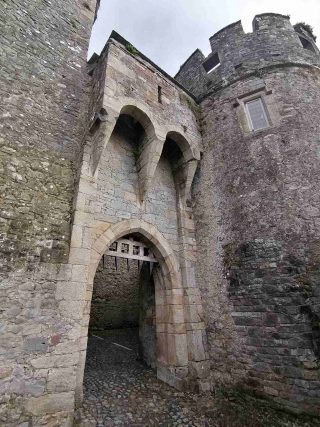
The castle has a myriad of features, which will capture the attention, one of which is the portcullis. Its winding mechanism and wooden gears are located within the Keep (main tower). The gate, a classic representation of a medieval castle is a favoured location for photographs.
The Banqueting Hall the heart of the castle is home to the oldest and the newest artefacts at Cahir Castle. High upon the north wall of this large room sit the impressive antlers of the Giant Irish Deer, which has been extinct for approximately 10,000 years, while the ornate fireplace, with a medieval shield embossed on its stonework, is in fact only a year old! The fireplace is a prop created for the movie, ‘The Last Duel’, directed by Ridley Scott, and is not made from stone at all but from plaster. The film has just been released.
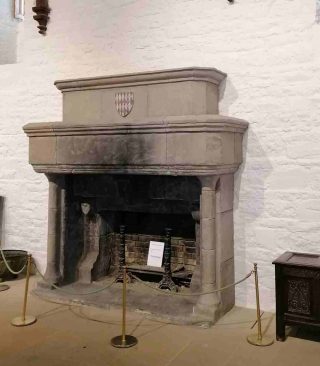
It’s not just tourists that have availed of the guided tours at Cahir, there have been many celebrity visitors to the castle since it opened, included among them the actor Mel Gibson of Braveheart fame, the historian Dan Snow and in 1995 the then President Mary Robinson toured the castle.
There are plenty of things to see beyond the castle walls including the finely designed wooden carvings of the Inch Field as well as the famous sword in the stone, erected in honour of the local people who played extras in the Hollywood movie Excalibur, which was partly filmed at Cahir Castle in the early 1980’s
The river Suir, which surrounds the castle, is home to a multitude of wildlife, including a flourishing colony of geese, a family of elegant swans, as well as herons, and a host of ducks that flock to see if visitors have any treats for them. In the adjacent parkland grey squirrels leap from branch to branch in the mighty oaks and buzzards and sparrow hawks soar high above the castle.
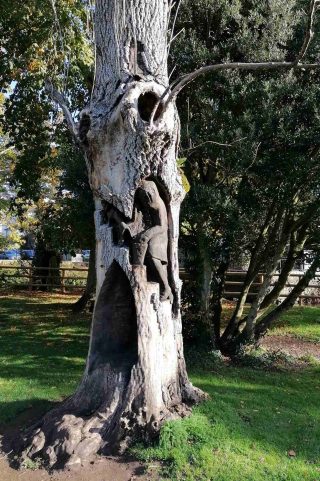
The Castle on Film
Just outside the castle are information plaques dedicated to the movies filmed at Cahir Castle. The history of the last 50 years is mirrored by the list of films starting with the 1973 production of ‘Catholics’ that starred the Hollywood Actors Martin Sheen and Trevor Howard.
In 1975, the director Stanley Kubrick, famous for his Sci/Fi epic 2001 A Space Odyssey, started filming another cult classic. ‘Barry Lyndon’ was a period drama starring Ryan O’Neil, Patrick Magee and Hardy Kruger and several key scenes were filmed in Cahir Castle’s Banqueting Hall, inner courtyard and in the adjacent Inch Field.
Richard Burton, arguably one of the finest actors of his generation, came to Cahir Castle to film the movie ‘Tristan and Isolt’, which was released in the USA as Love Spell. Alongside Burton were many Irish actors such as Geraldine FitzGerald and Neil Tobin. Sadly, the film has slipped into the movie ether and is rarely seen today.
It was director John Boorman, who really put the castle and the town on the Hollywood filming map when he chose Cahir Castle as one of the sites for his cult fantasy epic ‘Excalibur’. The film took the mythical story of King Arthur and his Knights and the mercurial wizard Merlin and brought it to the big screen. Excalibur helped to launch the screen careers of many famous actors such as Nicol Williamson, Patrick Stewart, Helen Mirren, Gabriel Byrne and Liam Neeson. It grossed over 35 million dollars in America alone and even today many visitors come to see where many of the films iconic battle scenes were filmed.
In 2013, a new historical slant on the life of King Henry VIII, The Tudors, began filming with Cahir Castle featuring in several scenes over the productions four season run. Jonathan Rhys Meyers and, future Superman actor, Henry Cavill starred in the smash hit show.
In recent years, two new major Hollywood productions have used the castle as a location. In 2019 ‘The Green Knight’ began filming and its lead star, Dev Patel, famous for films such as ‘Slumdog Millionaire’ and ‘The Exotic Marigold Hotel’ and Alicia Vikander (The Danish Girl and Lara Croft) featured. The film was released earlier this year (2021).
During September 2020, another major movie started filming at the castle. Legendary director Ridley Scott brought his new blockbuster production to Ireland. ‘The Last Duel’ starred Matt Damon, Adam Driver, Jodie Comer and Ben Affleck in a tale about a desperate duel to the death set in medieval France. It almost recalls the real life story of the previously mentioned event that occurred in the Banqueting Hall at Cahir Castle in 1627.
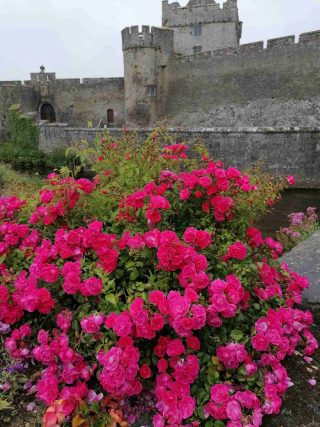
The mighty and well preserved Cahir Castle with its fascinating and rich history is always worthy of a visit, particularly this year in which it celebrates five decades open to the public.
Robert O’Brien joined the Office of Public Works as a tour guide in the summer of 2014, first working at Ormond Castle in Carrick-on-Suir before it closed for renovations, before moving on to Cahir Castle the following year.
Robert studied Creative Writing at Maynooth College in Kilkenny and has given Creative Writing workshops to adults and children over the years. He also studied horticulture at Kildalton College.
Robert is a keen historian with particular interest in the Crusades and naval operations during the Second World War. He lives in County Waterford.


